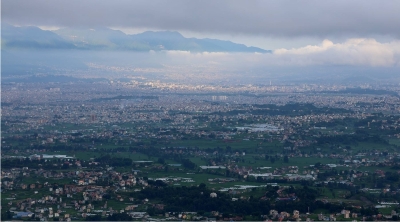BOOK REVIEW: Mini anthology of literature
Nepali Samalochana: Bivinna Aayam
Author: Dr Ram dayal Rakesh
Publisher: Royal Nepal Academy
Pages: 224
Price: Rs 163
Kathmandu:
Nepali Samalochana: Bivinna Aayam has ended a long spell of drought in the genre of literary criticism in Nepali. A book on literary criticism is something that stands out amongst a veritable flood of literary works in recent times in Nepal.
Dr Ram Dayal Rakesh has authored about a dozen books on various literary and cultural aspects earlier. Nepali Samalochana: Bivinna Aayam is yet another proof of his devotion to Nepali language and its checkered carrier. The book is a colourful canvas teeming with different sections like poetry, story, biography, song and sections like Bhojpuri, Maithali and Bengali.
The greatest attention seems to have been paid to the poetry section, as it includes 19 poets — from National Poet Madhav Ghimire to the youngest poet in the present literary circle, Jhamak Kumari. From revolutionary poet Gopal Prasad Rimal to Jarasandha of Nepali literature Hari Bhakta Katuwal to ghazal poet Krishu Chhetri, the book presents a veritable who’s who in the history of Nepali poetry. But only two writers are featured in the story section — Guru Prasad Mainali and Dev Kumari Thapa.
Surprisingly, the revolutionary saint Kabir finds a place in the Bhojpuri section, whereas the inclusion of Maithali Mahakabi Bidhyapati in the Maithali section is one of the most appreciable sections of the book.
And the last section of the book, which really forms its core, comprises the Bengali section, which features the Nobel prize winning poet Rabindra Nath Tagore. Another surprise gift for the readers is the romantic Hindi poet, Haribansh Rai ‘Madhushala’ Bachchan.
Nepali Samalochana: Bivinna Aayam could be called a mini anthology of literature, as a reader can sample different genres of literature, even from different languages. In the last decade, there have been more translations from other languages into Nepali, while similar translations from Nepali to other languages have declined greatly.
This book is an intelligent and innovative attempt by the author to cull the best from different literary sources and languages for the pleasure of Nepali readers.





